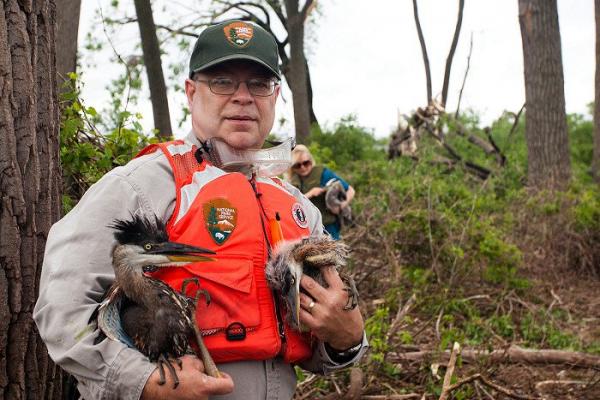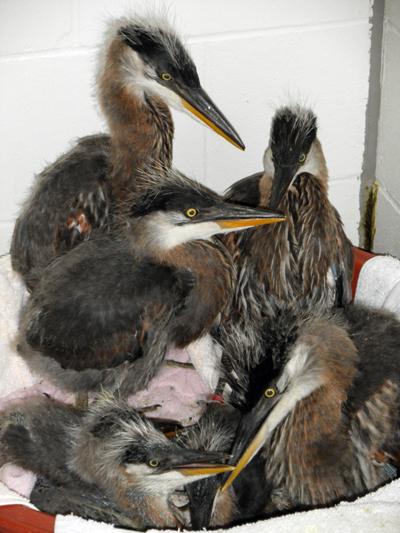Few Survivors Among Tornado's Young, Winged Victims


The tornado that struck Minneapolis, Minn., last Sunday (May 22) killed one person and has taken a toll on the region's wildlife as well.
The twister, one of many violent storms in a record-breaking tornado season , tore across an island in the Mississippi River where great blue herons were nesting, killing hundreds of the graceful aquatic birds, reported National Parks Traveler.
"Every chick in every nest was blown away. Most were thrown in the river and drowned right away. Some were on the island," Sharon Stiteler, a park ranger at the Mississippi National River & Recreation Area, wrote in an email.
The storm toppled all but a few of the island's 50 trees. According to some estimates, the island was home to 180 nests, each holding about two or three chicks, Stiteler said, meaning the twister killed at least 360 young herons, and possibly more.
"The adult herons fled the island when they saw the tornado coming. That is their survival and breeding strategy. Leave the immobile young behind and live to breed another day," Stiteler told OurAmazingPlanet.
Park staff and local volunteers picked through the torn branches and downed trees in the days after the storm, searching for surviving birds and assessing the damage.
Stiteler, a seasoned birder familiar with the rigors of life in the wild, said looking through the storm's aftermath was a difficult task.
Get the world’s most fascinating discoveries delivered straight to your inbox.
"Even I was pained to see young herons who died holding on to a branch with their beak, in a vain attempt to avoid falling in the river," Stiteler said.
However, despite the widespread destruction , searchers did recover nine surviving heron chicks, which are now being cared for by the Wildlife Rehabilitation Center of Minnesota.
Although the rescue effort was a challenge the heron nursery is on an island in the middle of a rapidly flowing Mississippi River the chicks appear to be doing well, said Tami Vogel, a spokeswoman with the wildlife center.
When the herons are flying well, Vogel said in an email, they'll be released into the wild near appropriate habitat.
Already, some of the adult great blue herons that survived the storm have begun to rebuild nests near the river, a surprising development, Stiteler said.
"By starting now, those chicks won't be ready until late August or early September, which is when they migrate south," Stiteler said. "However, if we have a mild fall, it might work out well."
- In Images: Bald Eagles of the Mighty Mississippi
- The Science Behind This Terrible Tornado Season
- Infographic: Tornado Science
Reach Andrea Mustain at amustain@techmedianetwork.com. Follow her on Twitter @AndreaMustain.



